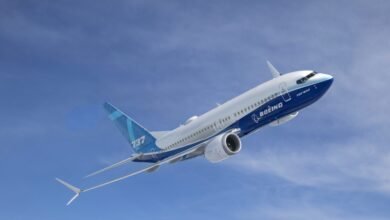Mystery Solved: Weather Balloon, Not Space Debris, Hit United Flight

▼ Summary
– A United Airlines flight from Denver to Los Angeles had its front window severely damaged in a mid-air collision last week.
– WindBorne Systems, a weather prediction company, identified one of its weather balloons as the likely cause of the incident.
– The company’s co-founder confirmed they reported their preliminary findings to the NTSB and FAA and are cooperating with the investigation.
– Online investigators, including YouTube creator Scott Manley, helped link the incident to a WindBorne balloon by correlating flight and balloon data.
– Images from the flight showed a cracked cockpit window and a pilot’s arm cut by glass shards from the impact.
The recent incident involving a United Airlines flight has been traced back to an unexpected source: a weather balloon. Last week, speculation ran wild after images surfaced showing significant damage to the cockpit window of a Boeing 737 MAX aircraft. Initial theories pointed toward space debris or large birds, but investigators have now identified the object as a weather balloon from WindBorne Systems, a private weather data company. The company confirmed its involvement after cross-referencing flight data with its own balloon tracking systems, bringing a swift close to the mystery.
Kai Marshland, co-founder of WindBorne Systems, disclosed that the company became aware of the possible connection late Sunday evening. By early Monday, they had submitted their initial findings to both the National Transportation Safety Board and the Federal Aviation Administration. Marshland emphasized their commitment to cooperating fully with the ongoing investigation, noting that the incident involved one of their proprietary balloons used for gathering atmospheric data.
Online investigators played a key role in identifying the cause. Scott Manley, a well-known YouTube creator and licensed pilot, was among the first to publicly suggest a link to a WindBorne balloon. By overlaying the aircraft’s flight path with publicly available balloon location data, Manley demonstrated a strong correlation in timing and position. When contacted for comment, WindBorne acknowledged the likelihood that one of its balloons was responsible for the impact.
The event took place on Thursday during United Flight 1093, which was traveling from Denver to Los Angeles. Photographs circulated on social media revealed one of the two forward-facing cockpit windows heavily fractured, with what appeared to be spiderweb-like cracks covering a large portion of the surface. Additional images showed a pilot’s forearm with several small lacerations, presumably caused by flying fragments of broken glass. Despite the dramatic damage, the aircraft landed safely and no serious injuries were reported among passengers or crew.
WindBorne Systems, established six years ago, operates a fleet of small, low-cost balloons designed to collect atmospheric information. The company uses this data to refine its own artificial intelligence-driven weather forecasting models. While such balloons are typically designed to operate at high altitudes and eventually degrade safely, this incident highlights the rare but real risks associated with objects sharing airspace with commercial aviation. Both federal agencies and the company continue to analyze how the collision occurred and what measures can prevent similar events in the future.
(Source: Ars Technica)
